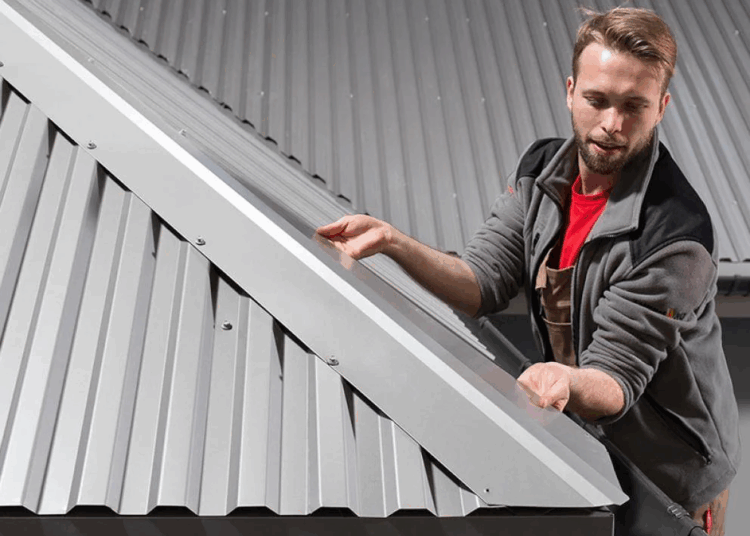As siding companies take the spotlight, this introduction invites readers into a realm of expertise, promising an informative and unique reading experience.
The following paragraphs will delve into the various aspects of siding companies, shedding light on different materials, installation processes, maintenance services, and energy efficiency concerns.
Types of Siding Materials
When it comes to choosing siding materials for your home, there are several options available, each with its own unique characteristics and benefits. Understanding the different types of siding materials can help you make an informed decision based on your preferences and budget.Vinyl Siding
- Vinyl siding is one of the most popular choices due to its affordability and low maintenance.
- It is available in a wide range of colors and styles, making it versatile for different architectural designs.
- With proper installation, vinyl siding can last for many years without fading or warping.
Fiber Cement Siding
- Fiber cement siding is known for its durability and resistance to rot, fire, and insects.
- It can mimic the look of wood, stucco, or masonry, providing a high-end appearance for your home.
- While the initial cost of fiber cement siding may be higher, its longevity and minimal maintenance make it a cost-effective choice in the long run.
Wood Siding
- Wood siding offers a natural and timeless look that can enhance the curb appeal of your home.
- It can be painted or stained in various colors to match your aesthetic preferences.
- However, wood siding requires regular maintenance to prevent rot, pests, and moisture damage.
Aluminum Siding
- Aluminum siding is lightweight, durable, and resistant to rust and corrosion.
- It is easy to install and comes in a variety of finishes to suit different architectural styles.
- While aluminum siding is low maintenance, it may dent easily and be prone to fading over time.
Siding Installation Process
When it comes to the installation of siding, there are several important steps that need to be followed to ensure a successful outcome.Proper Preparation Before Installing Siding
Before starting the installation process, it is crucial to properly prepare the area where the siding will be installed. This includes:- Cleaning the surface to remove any dirt, debris, or old paint that could affect the adhesion of the siding.
- Repairing any damaged areas to ensure a smooth and even surface for the siding to be installed on.
- Applying a weather-resistant barrier to protect the underlying structure from moisture and other elements.
Common Challenges During Siding Installation
During the siding installation process, there are several common challenges that may arise, including:- Uneven surfaces: Dealing with uneven surfaces can make it difficult to properly install siding. This challenge can be overcome by using shims or other leveling techniques to create a flat surface for the siding.
- Weather conditions: Extreme weather conditions such as high winds or rain can delay the installation process. It is important to check the weather forecast and plan accordingly to avoid any interruptions.
- Incorrect measurements: Incorrect measurements can lead to wasted materials and a poor fit. Double-checking measurements and taking your time during the installation process can help prevent this issue.
Maintenance and Repair Services
Proper maintenance and timely repairs are essential for ensuring the longevity and durability of your siding. By following recommended maintenance practices and addressing any issues promptly, you can prevent costly damage and maintain the aesthetic appeal of your home's exterior.Maintenance Practices
- Regularly clean your siding with a mild detergent and water to remove dirt, mold, and mildew buildup.
- Inspect for any signs of damage, such as cracks, warping, or loose panels, and address them promptly.
- Trim trees and bushes near your siding to prevent damage from branches rubbing against the surface.
- Check for signs of moisture infiltration, such as mold or mildew growth, and address any leaks or gaps in the siding.
Common Repair Issues
- Cracked or chipped siding panels
- Warping or buckling of siding due to moisture damage
- Mold or mildew growth on the surface
- Loose or missing siding panels
Repair Process and Professional Help
When it comes to repairing damaged siding, the process typically involves assessing the extent of the damage, removing the affected panels, and replacing them with new ones. For more complex issues, such as structural damage or extensive mold growth, it is advisable to seek professional help from siding experts.Energy Efficiency of Siding
When it comes to the energy efficiency of a home, the type of siding material chosen can make a significant impact. Different siding materials have varying levels of insulation and thermal resistance, affecting the overall energy consumption of a house.Insulated Siding and Its Benefits
Insulated siding is a type of siding that includes a layer of solid foam insulation attached to the back of the siding panels. This additional insulation helps to reduce thermal bridging and heat loss through the walls of the house, improving energy efficiency.- Insulated siding can help regulate indoor temperatures, reducing the need for heating and cooling, which can lead to lower energy bills.
- It also provides a barrier against outdoor noise, enhancing the overall comfort and livability of a home.
- Insulated siding can improve the durability and longevity of the siding material, protecting it from damage and reducing maintenance costs in the long run.
Choosing Energy-Efficient Siding Options
When selecting siding for your home, consider the following tips to choose energy-efficient options provided by siding companies:- Look for siding materials with high R-values, which indicate better insulation properties.
- Consider insulated siding options that offer enhanced energy efficiency benefits.
- Opt for light-colored or reflective siding materials that can help reduce heat absorption and keep the house cooler in warm climates.
- Choose siding materials that are durable and require minimal maintenance to ensure long-term energy savings.









